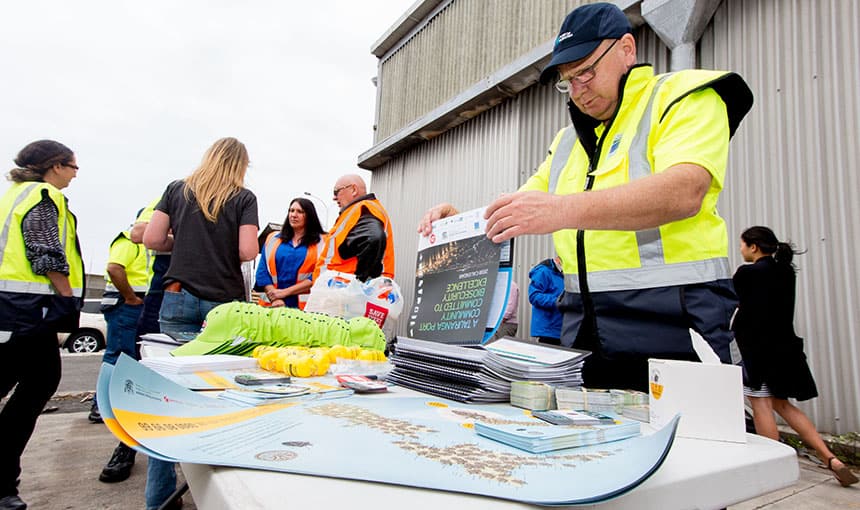Tauranga Moana Biosecurity Capital (TMBC) is the third Flagship Site for the BioHeritage Challenge, with this collaboration being aligned with our goal of eliminating threats posed by pests, weeds, and pathogens.
Flagship Site partnerships provide a pathway to the Challenge’s goal of achieving a fundamental shift in the way science and research is carried out in New Zealand, BioHeritage Director Dr Andrea Byrom says.
“In particular, we believe that transformational change can only be achieved through partnerships with industry, the private sector, Māori and the community.”
The Challenge’s involvement supports research on surveillance and detection of pests at the border being done by the Better Border Biosecurity (B3) science consortium. It bolsters the Port of Tauranga’s commitment to use science to support innovation and grow biosecurity excellence. B3’s goals are strongly aligned with the BioHeritage Challenge, with them sharing a vision to deliver transformational biosecurity solutions for New Zealand.
The Port of Tauranga biosecurity partnership was formed in 2014 between the port, several primary industries, and central and local government agencies. All groups work together to prevent and respond to biosecurity risks through the Port of Tauranga.
Port of Tauranga Chief Executive Mark Cairns said the partnership strengthens the significance of biosecurity within the port and local community.
“New Zealand ports are an essential part of the New Zealand economy and a key component of our border biosecurity system. Effective biosecurity awareness and the use of the very best tools and technologies is critical to us continuing to run a successful business that services the Bay of Plenty region.”
Stu Hutchings, Chief Executive of industry partner Kiwifruit Vine Health (KVH), says the partnership recognises that everyone who works in and around the port community, including the freight sector and transitional facilities, can all play a big part in keeping unwanted pests and pathogens out of New Zealand.
The other two Flagship Sites supported by BioHeritage are Cape to City in the Hawke’s Bay and Taranaki Mounga.
“Being involved with Flagship Sites provides opportunities to broaden and deepen the range of activities being undertaken, and helps us connect with the public,” Andrea says.
“Our involvement also recognises the strategic role that science and research must play in shaping New Zealand’s future.”
